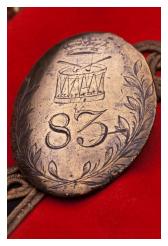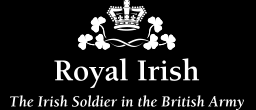83rd Regiment's actions in Lower Canada

|
In 1837, the European inhabitants of Lower Canada, ceded to the British in 1760 (after the conquest of Quebec by General Wolfe), were mainly French Canadians. Lower Canada corresponds, roughly, with the present province of Quebec. It was not surprising that the French Canadians could be disloyal. However, there was an extraordinary number of French Canadians loyal to the British, making it difficult for the anti-British rebels to find, let alone exploit, any grievances in order to incite the population against their colonial power.
The province was populated mainly along the St. Lawrence River and the lakes of Ontario and Erie. The waterways facilitated British troop amphibious operations to counter any insurrection. The few British troops in country included the 83rd Regiment at Quebec. On the 1 November 1837, two companies of the 83rd went to Three Rivers, and on the 10 November, moved along the St. Lawrence to Montreal. While there, with the remainder of the Regiment still at Quebec, two political agitators were sprung from captivity by 300 armed rebels on the 18 November and this was quickly followed by two actions against rebel forces south-east of Montreal - one at Saint Denis on the 23 November, the other at Saint Charles on the 25 November. On 9 December, the remainder of the 83rd left Quebec and joined the other two companies in Quebec Gate Barracks, Montreal.
When a party of rebels established themselves at a village called St. Eustache to the north-west of Montreal, General Sir John Colborne left Montreal on 13 December with a 2,000-strong expeditionary force that included the 83rd Regiment commanded by Lieutenant-Colonel Dundas. On 14 December, the force deployed ready to attack Saint Eustache. The force's artillery guns opened fire on the village around 1130 hours and although the infantry moved to surround the town, many of the rebels escaped before the cordon was complete. Those remaining made the church their fortress and drove back the force’s artillery with heavy fire from the upper windows of the organ loft, as shot from the guns made no impression on the church's stout walls; however, the door was riddled. Although the houses near the church were taken, the rebels inside continued to hold out. When the roof of the church caught fire, the attackers held back from storming the stronghold in order to avoid own heavy losses and by 1420 hours, the church was well alight. The roof finally collapsed at 1800 hours, killing many of the rebels inside.
The rebel leader (Cheerier), was shot trying to escape; 108 prisoners were taken, and between seventy and two-hundred rebels killed. On 15 December, the force marched to the village of St. Benoit and then returned to Montreal on the 17 December. The losses included one killed and eight wounded. This was a difficult action at a time of the year when temperatures were from 20 to 30 degrees below zero Fahrenheit (-30 to -35 Celsius).





